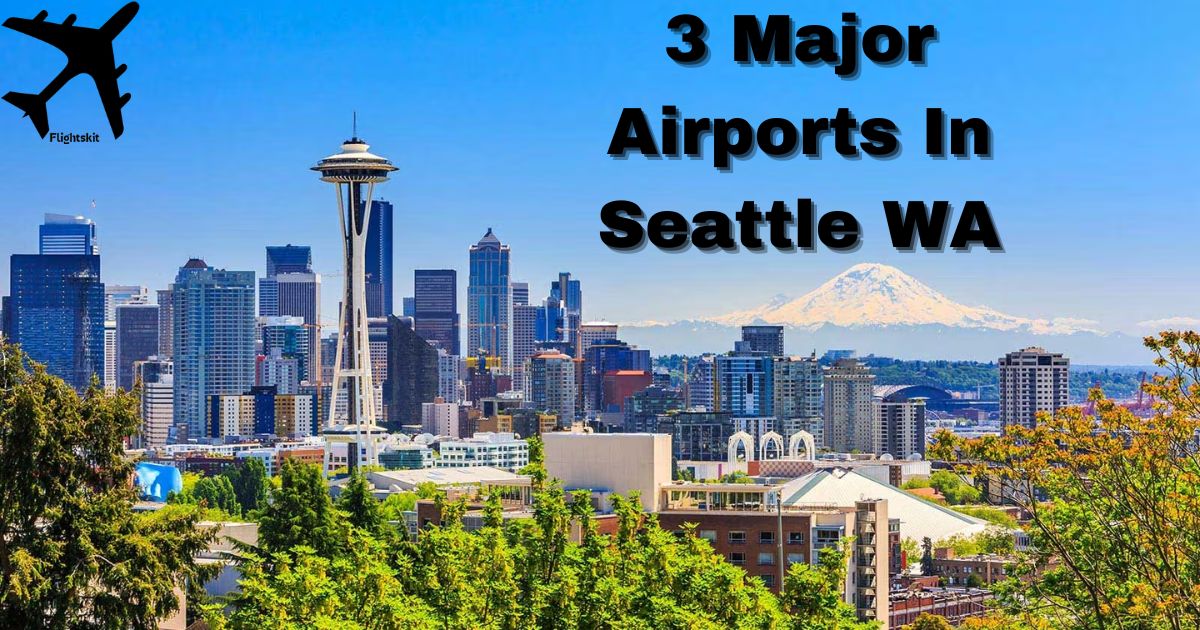Seattle WA is a cool city in the northwest part of the U.S. It is known for its pretty waterfront the famous Space Needle and lots of tech stuff. People love Seattle for its cool vibe, music scene and fun outdoor things to do.
Get ready for an amazing journey in the sky by checking out the three big airports in Seattle WA. First the busy Seattle-Tacoma International Airport where you can start your travel adventures. Then head to Boeing Field to see cool aviation stuff taking off. Lastly explore the unique beauty of King County International Airport. If you are a frequent flyer or just curious Explore All 3 Major Airports In Seattle WA is your chance to find the different and awesome things about flying in the Emerald City.
It has three big airports each with its own job. Seattle-Tacoma International Airport (SEA) is where most people take regular flights. Boeing Field (BFI) is for private planes and cargo. King County International Airport has a cool history in aviation and used to be called Boeing Field.
Top 3 Major Airports in Seattle WA
Seattle, Washington has three big airports that help people travel. The busiest one is called Seattle-Tacoma International Airport (SEA). Another important one is King County International Airport (KCIA) also known as Boeing Field.
It deals with private planes, cargo and military flights. Renton Municipal Airport (RNT) situated in Renton is the third airport in the city mainly used for private planes and short-distance flights. In collaboration with aviation services including the American Automobile Association for ground assistance all these airports work together to make it easy for people to travel in and out of Seattle.
| Airport | Code | Role |
| Seattle-Tacoma International Airport (SEA) | SEA | Commercial, Domestic and International |
| King County International Airport (KCIA) | KCIA | General Aviation, Cargo, Military |
| Renton Municipal Airport (RNT) | RNT | General Aviation, Regional |
Seattle-Tacoma International Airport (ICAO: KSEA, IATA: SEA, FAA LID: SEA)
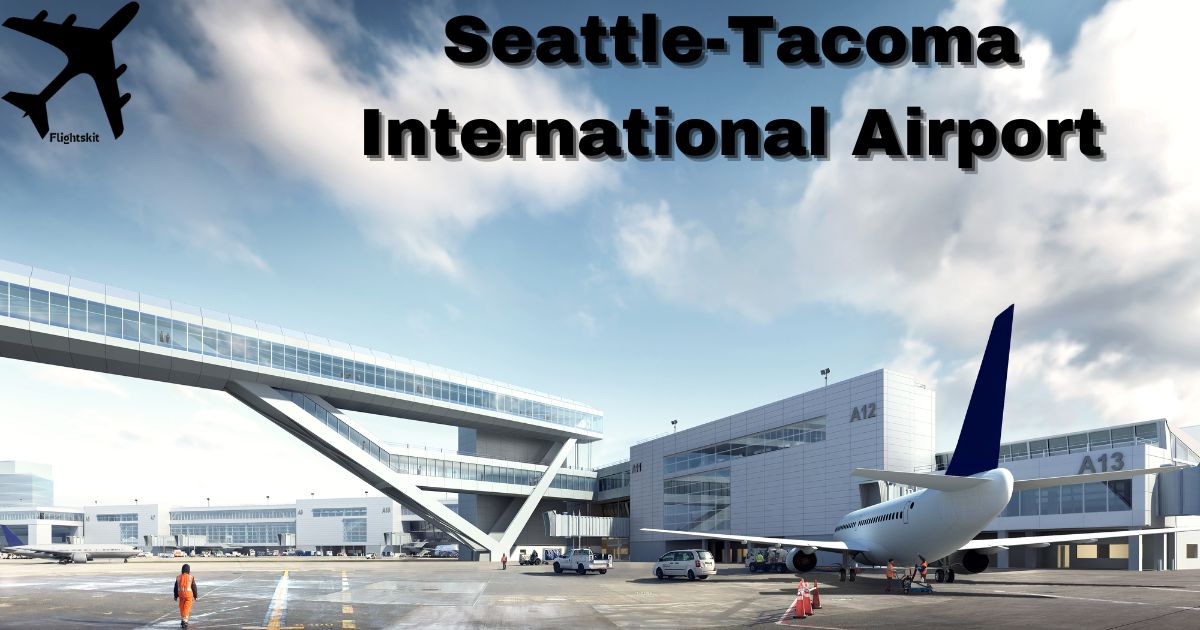
Seattle-Tacoma International Airport is a big airport in Washington with the codes KSEA (ICAO), SEA (IATA) and SEA (FAA LID). It is like a super busy doorway to the Pacific Northwest connecting people to places all over the world. You can find it right between Seattle and Tacoma and it is a favorite stop for both local and international flights.
The airport is cool because it is got everything you need yummy food, places to shop and comfy lounges. They are also big on being good to the environment with lots of green ideas and eco-friendly. People really like going through Seattle-Tacoma Airport because it is well-organized and they make sure everyone has a good time while traveling.
Technical Information
| Parameter | Information |
| Location | Seattle, Washington, USA |
| Airport Code | SEA |
| Elevation | 433 feet (132 meters) |
| Runways | 3 runways (16L/34R, 16C/34C, 16R/34L) |
| Runway Lengths | Varies: 8,500 to 11,900 feet |
| Terminal Complexes | North Satellite, Central Terminal, South Satellite |
| Annual Passengers (approx.) | Over 50 million |
| Airlines | Served by numerous domestic and international airlines |
| Cargo Facilities | Extensive cargo operations with dedicated facilities |
| Parking Facilities | Multiple parking options for short-term and long-term parking |
| Ground Transportation Options | Light Rail, Shuttle Services, Taxis, Rental Cars, etc. |
| Other Facilities | Duty-free shopping, dining, lounges, conference rooms |
| Control Tower | Yes |
History of Seattle-Tacoma International Airport
Seattle Tacoma International Airport or SEA has a cool history that started back in 1949. People needed a better airport for the growing number of airplanes in the Puget Sound area so SEA was built. At first the airport had a smaller building now called the North Satellite but it has grown a lot.
As the years passed SEA got bigger and better turning into one of the busiest airports in the United States. It connects the Pacific Northwest to different parts of the world and is like a central hub for many big airlines.
They changed the name to Seattle-Tacoma International Airport in 1973. The airport has kept up with the times making improvements to be more eco-friendly and easy for passengers. Today SEA is a super important place and its story shows how Seattle and Tacoma have grown over time.
Seattle-Tacoma International Airport Runway Information
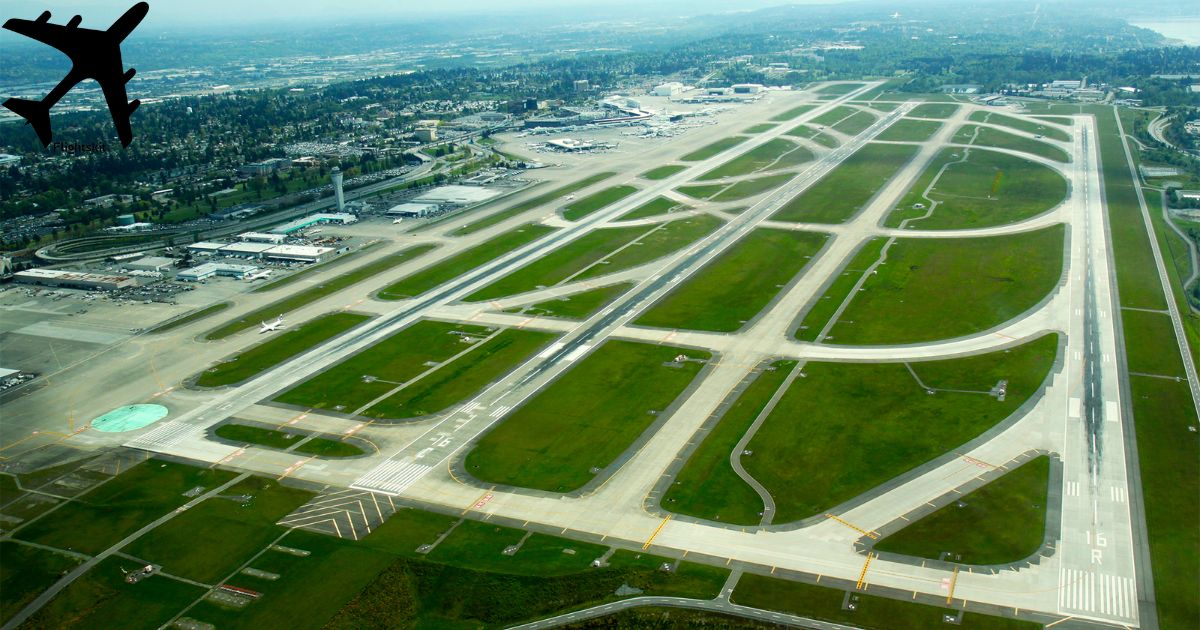
The Seattle-Tacoma International Airport is equipped with three concrete runways.RWY 16L/34R spanning 11,901 feet, RWY 16C/34C with a length of 9,426 feet, and RWY 16R/34L covering 8,500 feet.
| Runway Designation | Length | Surface |
| RWY 16L/34R | 11,901 ft (3,627 m) | Concrete |
| RWY 16C/34C | 9,426 ft (2,873 m) | Concrete |
| RWY 16R/34L | 8,500 ft (2,591 m) | Concrete |
Runway History
Seattle-Tacoma International Airport (SEA) display a rich runway history that reflects the region aviation evolution. Initially established in 1944 as a military airfield the airport quickly transformed into a crowded civilian point. The first runway constructed during this transition was a modest 5000 feet long serving the needs of propeller-driven aircraft of that era.
Over the decades SEA runway infrastructure has undergone significant expansions and modernizations to arrange the growing demand for air travel. The introduction of jet powered aircraft in the 1960s charged the extension and strengthening of runways to handle larger and heavier planes.
Today, SEA stands as a testament to continuous adaptation, with its state-of-the-art runways facilitating the easy movement of a diverse fleet of aircraft contributing to the airport main role in the Pacific Northwest air transportation network.
Facilities at Seattle-Tacoma International Airport
It is in the heart of the Pacific Northwest, Seattle-Tacoma International Airport (SEA) display a range of world-class facilities, ensuring a best travel experience for passengers. The airport features modern facilities that provide to diverse needs from leisure travelers to business executives.
| Facility | Description |
| Terminals | Four terminals with efficient passenger flow and services |
| Lounges | Premier lounges for relaxation and business amenities |
| Dining | Diverse culinary options, catering to various tastes |
| Shopping | Retail outlets offering a mix of local and global brands |
| Wi-Fi | High-speed internet connectivity throughout the airport |
| Parking | Ample parking options, including short-term and long-term |
| Ground Transport | Convenient options like shuttles, taxis, and rental cars |
| Business Services | Conference rooms and workspaces for business travelers |
| Family-Friendly | Play areas and facilities to accommodate traveling families |
| Accessibility | Services for passengers with reduced mobility |
SEA commitment to excellence extends beyond its attractive surroundings making it a central point where efficiency and passenger comfort commbine easily. Travelers can expect a comprehensive experience from the moment they enter the terminals to the time they depart making SEA a standout choice for air travel in the Pacific Northwest.
What major airlines fly into Seattle?
COMMERCIAL AIRLINES – Aer Lingus, AeroMexico, Air Canada, Air France, Alaska Airlines, American Airlines, All Nippon Airways, Asiana Airlines, British Airways, Cathay Pacific, Condor, Delta Air Lines, Emirates, EVA Air, Frontier Airlines, Hainan Airlines, Hawaiian Airlines, Icelandair, Japan Airlines, JetBlue Airways, Korean Air, Lufthansa, Qatar Airways, Singapore Airlines, Southwest Airlines, Spirit Airlines, Sun Country Airlines, United Airlines, Virgin Atlantic, Volaris and WestJet.
CARGO AIRLINES – AeroLogic, Amazon Air, Ameriflight, Alaska Air Cargo, Asiana Cargo, Cargolux, China Airlines Cargo, China Cargo Airlines, DHL Aviation, EVA Air Cargo, FedEx Express, FedEx Feeder, Kalitta Air, Korean Air Cargo, Lufthansa Cargo and Singapore Airlines Cargo.
Top Domestic Destinations
| Destination | Operating Airlines |
| Phoenix-Sky Harbor, Arizona | Alaska, American, Delta, Frontier, Southwest |
| Anchorage, Alaska | Alaska, Delta |
| Las Vegas, Nevada | Alaska, Delta, Southwest, Spirit |
| Denver, Colorado | Alaska, Delta, Frontier, Southwest, United |
| Los Angeles, California | Alaska, American, Delta, United |
| Dallas/Fort Worth, Texas | Alaska, American |
| Chicago-O’Hare, Illinois | Alaska, American, Delta, Spirit, United |
| Portland, Oregon | Alaska, Delta |
| Atlanta, Georgia | Alaska, Delta |
| San Diego, California | Alaska, Delta |
Top International Destinations
| Destination | Operating Airlines |
| Vancouver, Canada | Air Canada, Alaska, Delta |
| Seoul-Incheon, South Korea | Asiana Airlines, Delta, Korean Air |
| London-Heathrow, United Kingdom | American, British Airways, Delta, Virgin Atlantic |
| Frankfurt, Germany | Condor, Lufthansa |
| Dubai-International, UAE | Emirates |
| Beijing-Capital, China | Hainan |
| Amsterdam, Netherlands | Delta |
| Taipei-Taoyuan, Taiwan | EVA Air |
| Tokyo-Narita, Japan | Japan Airlines |
| Victoria, Canada | Alaska |
Top Carriers by Passengers
| Airlines | Passengers (percent of the total) |
| Alaska Airlines | 50.6% |
| Delta Air Lines | 23.3% |
| United Airlines | 6.2% |
| Southwest Airlines | 6.2% |
King County International Airport (IATA: BFI, ICAO: KBFI, FAA LID: BFI)
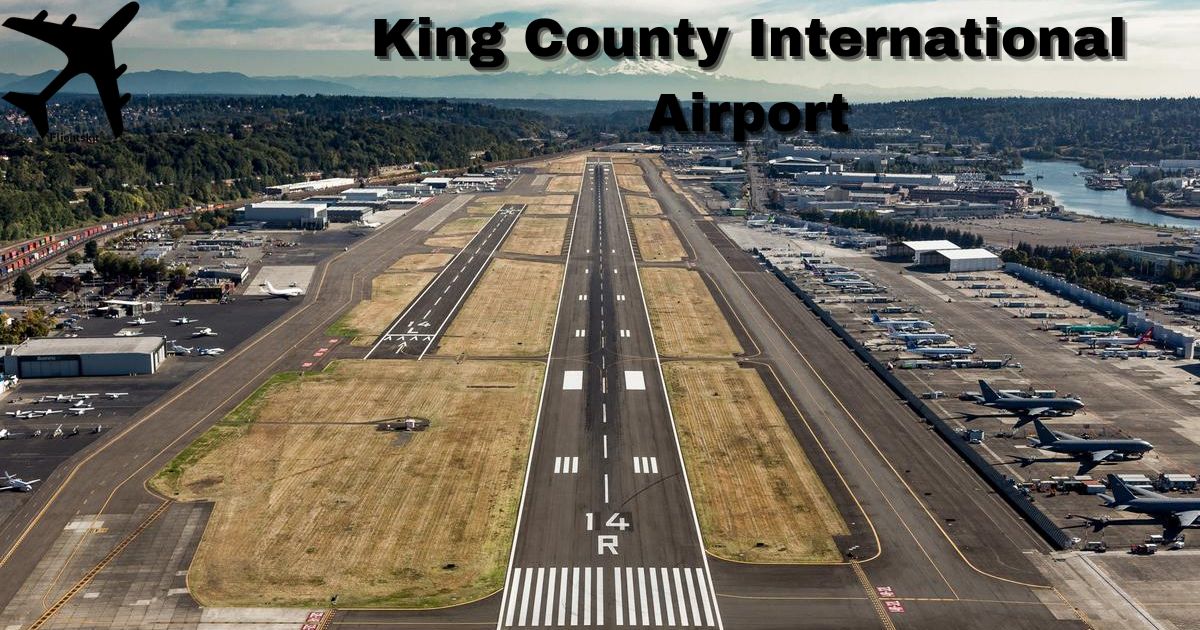
King County International Airport (BFI) is located in Seattle Washington serves as a vital hub for general aviation and cargo flights. As one of the busiest non-commercial airports in the United States BFI plays a major role in supporting the region economic activities.
With its IATA code BFI, ICAO code KBFI and FAA LID BFI the airport display modern facilities and a strategic location making it a best choice for a diverse range of aviation operations.
King County International Airport is not far from downtown Seattle. It is a busy place where different types of planes, like private ones and business jets, land and take off. The airport has good runways and modern facilities that help planes move around easily. This airport is important for connecting the local area with nearby places. Explore All 3 Major Airports In Seattle WA and each one has its unique features in the world of flying.
Technical Information
King County International Airport (BFI) is a crowded aviation point located in Seattle Washington. Here is a concise overview of its technical information:
| Identifier | Description |
| IATA | BFI |
| ICAO | KBFI |
| FAA LID | BFI |
| Location | Seattle, Washington |
| Type | Public |
| Runways | 2 |
| Control Tower | Yes |
| Elevation | 21 feet (6 meters) |
| Facilities | General aviation, cargo |
With its IATA code BFI, ICAO code KBFI, and FAA LID BFI, King County International Airport stands out as a vital aviation facility, equipped with modern infrastructure to facilitate general aviation and cargo operations. The presence of a control tower ensures efficient air traffic management making it a key player in the region air transportation network.
History of King County International Airport
King County International Airport also known as Boeing Field has a rich history deeply connected with the aviation industry evolution in the Pacific Northwest. Established in 1928 the airport began as an open field for Boeing test flights.
Over the years it played a main role in the development of iconic aircraft including the Boeing 707 and 727. As commercial aviation expanded, King County International Airport transformed into a vital hub for general aviation, cargo operations and emergency services.
During World War II, the airport strategic location led to increased military activity, with the U.S. Army Air Corps utilizing the facility. Post-war, Boeing Field experienced significant growth adapting to the changing demands of air travel. Today it continues to serve as a best facility for regional air traffic showcasing a legacy that mirrors the dynamic history of aviation in the Seattle area.
King County International Airport Runway
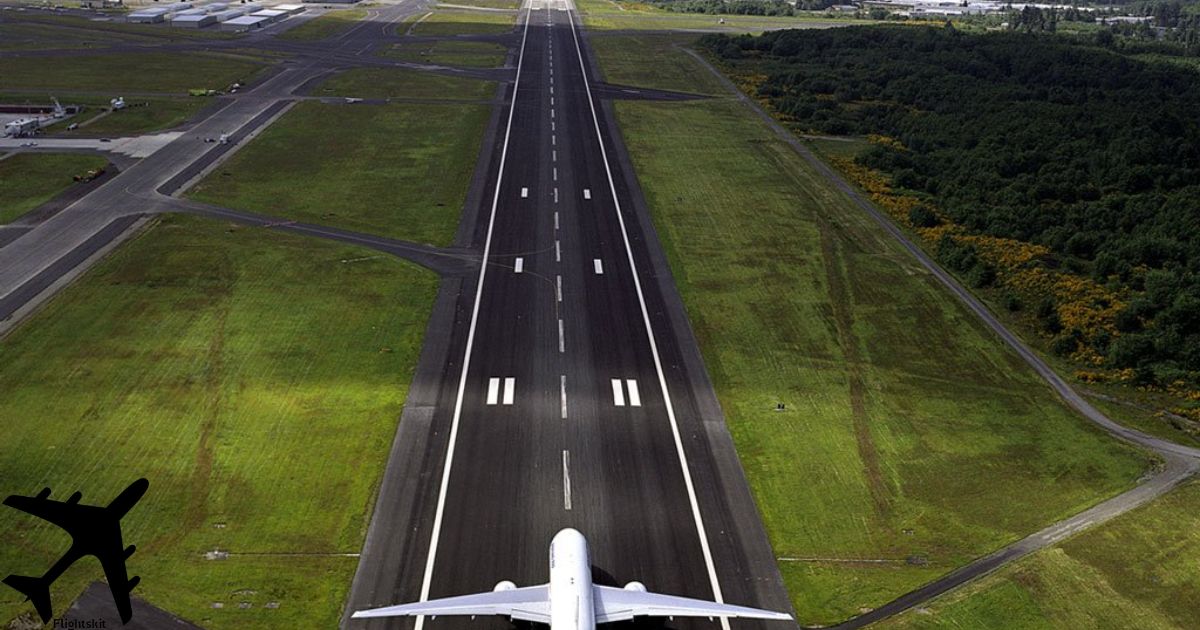
King County International Airport located in Seattle, Washington display a rich history and vital runway infrastructure. Initially known as Boeing Field it opened in 1928 and served as a test site for Boeing aircraft. Over the years the airport evolved into a main hub for general aviation, cargo operations and military activities.
Runway Information:
The airport features two parallel runways, Runway 13R/31L and Runway 13L/31R. These runways are strategically designed to accommodate a diverse range of aircraft, from small general aviation planes to larger cargo and military aircraft. Runway 13R/31L measures 10,000 feet in length, while Runway 13L/31R spans 3,710 feet. This layout ensures the airport ability to handle various flight operations efficiently.
History:
King County International Airport has played a main role in the aerospace industry development ensuring the growth of aviation technology. Its historical significance as a Boeing test site highlights its importance in the region aviation landscape. Today the airport continues to serve as a vital transportation hub connecting people, goods and services while preserving its legacy as an integral part of Seattle aviation heritage.
| Runway | Length (feet) | Surface |
| 13R/31L | 10,000 | Asphalt |
| 13L/31R | 3,710 | Asphalt |
Facilities at King County International Airport
King County International Airport is located in Seattle Washington, display a range of modern facilities to ensure a best and comfortable travel experience. The airport offers well-equipped terminals with facilities such as lounges, dining options and retail stores serving to the diverse needs of travelers.
Its state-of-the-art security measures prioritize passenger safety. Also, King County International Airport provides efficient ground transportation services, including car rentals and shuttle services facilitating convenient access to and from the airport.
| Facility | Description |
| Terminals | Modern facilities with lounges and amenities |
| Dining Options | Restaurants offering diverse cuisine options |
| Retail Stores | Shops for shopping and convenience |
| Security Measures | State-of-the-art security for passenger safety |
| Ground Transportation | Car rentals and shuttle services for easy access |
Airlines operating at Boeing Field
Boeing Field found in Seattle Washington is mainly famous for making and testing airplanes but it also has different airlines. It is not as busy as bigger airports nearby but it is a base for some private and charter airlines.
These airlines use the airport good location and facilities to give easy services for both business and leisure travelers. One special airline at Boeing Field is Kenmore Air known for flying seaplanes. Kenmore Air takes advantage of the airport unique setup to smoothly switch between land and water providing travelers with a attractrive journey to places in the Pacific Northwest.
Also some executive and cargo airlines pick Boeing Field because of its efficient operations and closeness to the aerospace industry. Even though it is mostly an industrial place Boeing Field is important for offering various airline services, making the aviation scene in the Pacific Northwest exciting and diverse.
Renton Municipal Airport (ICAO: KRNT, IATA: RNT, FAA LID: RNT)
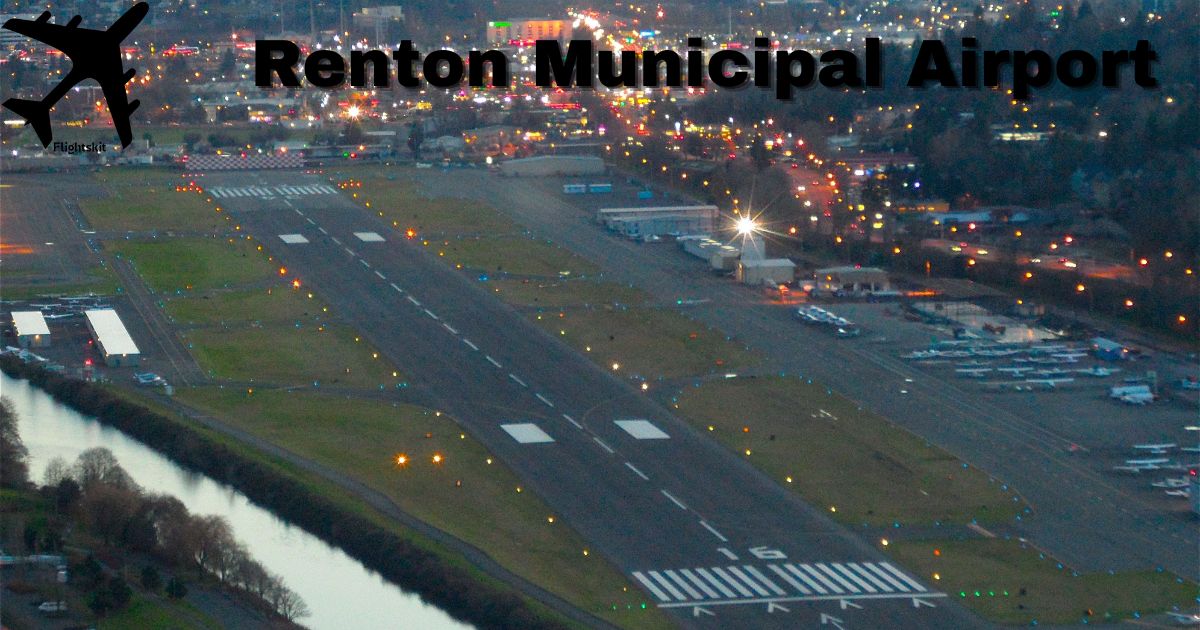
Renton Municipal Airport is a public airport in Renton, Washington USA. It is well-known for being really close to Boeing’s Renton Factory where they make the Boeing 737.
The airport has one runway and is important for general aviation, flight training and business planes. Because of its good location and important role in flying, Renton Municipal Airport is a major part of air traffic in the area.
People who fly planes and those who love aviation like the airport because it has good facilities and is convenient. Whether it is the sound of small private planes or the occasional noise of bigger planes, Renton Municipal Airport is a lively and important part of the local aviation scene.
History of Renton Municipal Airport
Renton Municipal Airport in Washington has a cool history that began in 1929. Back then it was called Renton Field. During World War II, the airport became super important because it helped make Boeing B-29 Superfortress bombers.
They had to build lots of hangars and facilities to do this. After the war, Renton Airport continued to be a big deal for Boeing making the famous Boeing 737 since the 1960s. The airport got updates over time to keep up with changes in aviation. Nowadays Renton Municipal Airport is still really important in making planes and serving the local aviation scene.
Renton Municipal Airport Technical information
Renton Municipal Airport is an important place for planes near Seattle, Washington. It is a key point for small and big planes and it is right in the middle of the Puget Sound area. The airport is important for the aerospace industry helping big companies build and test airplanes.
With a 5,382-foot runway and useful facilities it welcomes all kinds of planes. Being close to aerospace companies makes it a big part of the local economy, and it is a major player in the aviation scene in the Pacific Northwest.
| Technical Information | Details |
| Runway Length | 5,382 feet |
| Location | Renton, Washington |
| Primary Use | General Aviation, Aerospace |
| Notable Features | Aerospace manufacturing facilities |
| Nearby Companies | Major aircraft manufacturers |
| Facilities | Various amenities for aviation |
| Importance | Key role in regional aerospace |
Renton Municipal Airport Runway Information
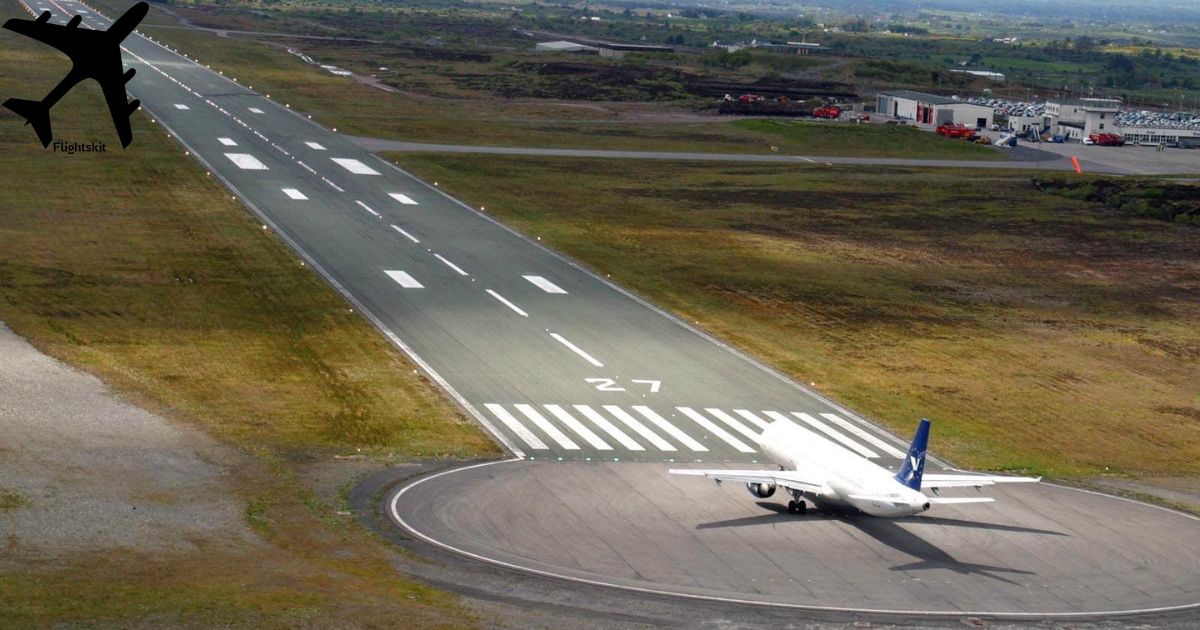
The Renton Municipal Airport close to Seattle is an important place for small planes and aerospace activities. It has one runway called Runway 16/34 that is 5,382 feet long. The runway goes north to south to match the wind direction, making takeoffs and landings safe and smooth.
The airport has a cool history. It started in the 1920s and was a big part of making airplanes in the area. As time went on the airport got bigger and more modern to keep up with the needs of the aviation industry. Nowadays it is a symbol of how important flying is in the history and present of Seattle.
| Runway | Orientation | Length |
| 16/34 | North-South | 5,382 feet |
Facilities at Renton Municipal Airport
Renton Municipal Airport is located in the lively city of Renton close to Seattle, Washington. It has really good facilities for people who love flying small planes or for those who operate larger commercial planes. The airport has a well-kept runway and taxiway system making it easy for planes to take off and land smoothly.
The airport also has a modern building where visitors can find important services like help with planning flights and support from friendly staff. If you are someone who loves airplanes, Renton Municipal Airport has great things to offer. There are places to store planes, like hangars and tie-down areas that can fit many different sizes of aircraft.
The airport is in a smart location making it easy for people to get to Seattle and its surrounding areas. This makes Renton Municipal Airport a popular choice for anyone who wants a smooth and easy experience with flying.
If you are a pilot needing important services or just someone who loves planes Renton Municipal Airport is a great place with excellent facilities right in the heart of the Pacific Northwest.
FAQ’s
What is the largest airport in Seattle?
Seattle-Tacoma International Airport (SEA) Home.
What are the major airports in Seattle?
There are 3 airports in Seattle: Seattle-Tacoma International Airport also known as Sea-Tac Airport, Seattle Lake Union SPB (Seaplane Base) and Seattle Boeing Field.
How many airports are there in Seattle?
There are 4 airports in Seattle, Seattle Lake Union SPB, Seattle Boeing Fld, Seattle / Tacoma International, and Everett.
What airline has the most flights out of Seattle?
Alaska Airlines dominates the flight landscape in Seattle boasting approximately 1,877 scheduled departures per week. This figure stands notably higher than the second-largest operator, Delta Air Lines, which manages around 564 weekly departures.
Which airport should I fly into for Seattle?
If you are going to Seattle by plane, it is best to use Seattle-Tacoma International Airport (SEA). It is the main airport in the area and has lots of flights within the country and to other countries.
What is the closest major airport to Seattle?
Seattle-Tacoma International Airport (SEA) is the closest major airport to Seattle. The airport is just 13 miles away from Seattle requiring a 14-minute drive.
Which airport is cheaper to fly into Seattle?
Selecting the most budget-friendly Seattle airport hinges on factors such as your departure location, available airlines, and current promotions. While Seattle-Tacoma International Airport (SEA) is the primary choice for domestic and international flights, nearby alternatives may also suit your travel preferences.
Conclusion
In summary the examination of Seattle, WA three primary airports provides travelers with a varied and comprehensive experience. Journey through Seattle-Tacoma International Airport, Boeing Field/King County International Airport and Renton Municipal Airport allows individuals to observe the distinctive characteristics and functionalities of each aviation hub.
Travelers are encouraged to examine into the unique features of each airport ensuring that their journey through Seattle skies becomes a truly enriching and insightful experience. Explore all 3 major airports in Seattle WA reveals the city strong air infrastructure, accommodating both domestic and international flights. Whether it is the modern services of Seattle-Tacoma the aerospace significance of Boeing Field or the convenience offered by Renton Municipal hold this trio provides a well-rounded position on the aviation landscape in the Pacific Northwest.

A seasoned aviation enthusiast combines technical expertise with a conversational writing style offering readers an insightful and engaging journey through the interesting world of aviation and flights.
